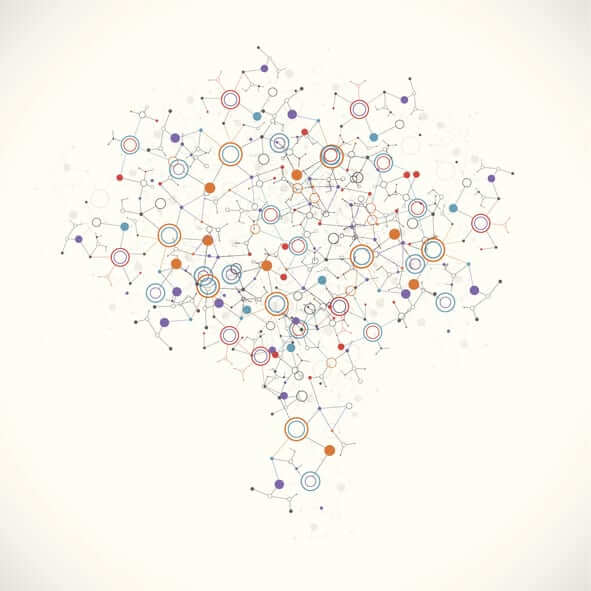This website uses cookies so that we can provide you with the best user experience possible. Cookie information is stored in your browser and performs functions such as recognising you when you return to our website and helping our team to understand which sections of the website you find most interesting and useful.
5 Strategies for Maximizing Your 4 Brains

Yes, you have four brains. Advances in medical technology have allowed scientists to peek inside humans like never before. And they found four brains.
I believe that part of rising to your potential, or helping others do the same, requires knowing how our human body is wired and maximizing its effectiveness. If you don’t know about the brains, how can you possible use them to their fullest?
The grey matter inside our skull has three distinct layers, called the triune brain, that evolved over time. And scientists have discovered another batch of complex neurons located in our abdomen that function as a fourth brain. Let’s start with the triune brain.
Your Reptilian Brain
The innermost layer of our triune brain is known as the reptilian brain. This section governs our core survival functions like breathing, body temperature, pain receptors, and heart rate, and runs them automatically so we don’t have to “think” about doing them. It’s called the reptilian brain because other living creatures, like snakes and lizards, share the same structure of a brainstem and cerebellum. It also contains the basal ganglia, which is where our behaviors become rote habits that we don’t have to think about, like riding a bike or driving a car. This portion of the brain is involuntary, instinctual and impulsive.
The reptilian brain also is responsible for the “fight or flight response.” Our senses take in information and when a potential threat is detected, the amygdala sets off a cascade of adrenalin and cortisol that flood the body within 200 milliseconds. This powers up our muscles and heart rate, so that we can survive the threat.
But did you know that you can overtax your reptilian brain? Living under constant stress or engaging in ongoing worry can make the amygdala grow larger and more sensitive, which makes you more prone to anxiety. In addition, raised levels of adrenalin and cortisol are harmful to the body over time, creating weight gain, high blood pressure and shrinking the hippocampus, a major player in how we for memories.
The amygdala also doesn’t know the difference between real situations and the lifelike ones portrayed on media. Our reptilian brain cannot distinguish between a real attack and the online game we are playing or the lifelike explosions we see in movies.
TIP #1: Mindfulness practices like yoga and meditation actually calm our nervous system and undo some of the damage that comes from daily overstimulation, making you less prone to anxiety, weight gain, and memory loss.
Your Emotional Brain
The middle layer of the triune brain is the limbic brain, and all mammals have this layer, including humans. This portion contains the hippocampus and hypothalamus, which play key roles in how we learn and store memories. The limbic brain is responsible for the eight core emotions of joy, sadness, trust, disgust, fear, anger, surprise, and anticipation, something we share with the other mammals. Anyone who has ever had a dog knows this to be true. In humans, the limbic brain also uses those emotions to learn from experiences, form memories, and make value judgments.
This part of our brain is wired to read the emotions of others and is responsible for our feeling of connection. Our senses can detect incredibly subtle changes in the facial muscles, vocal tone, and body language of others and even has the ability to distinguish between one million different smells. All of this contributes to our ability to understand, care for, and successfully interact with other humans as well as mammals. When this portion of the brain is not fully developed or able to function properly, people engage in anti-social behavior that can be off-putting or even threatening to others.
Interestingly, your emotional brain operates best in person, where it can use all of its faculties to accurately read the emotions and intentions of another person. But when we go digital, we lose almost all of those cues—words on a screen can be interpreted in a myriad of ways, which is why a friend or co-worker can misread your text or email.
TIP #2: When you are engaging in important communication, try to interact in person, and if that’s not possible, at least engage through video where your emotional brain can see and hear more subtle cues.
Your Thinking Brain
The outer layer is called the neocortex and is present in all primates, including us. Interestingly, dolphins and orcas have similar brain structures and are considered by many scientists to be “non-human persons.”
This portion is divided into the two hemispheres and is responsible for language, complex social interactions, abstract thought, imagination, and consciousness, as in self-awareness. This layer also can sort the core emotions into much more subtle variations like cheerfulness, delight, and glee.
The neocortex is responsible for the development of human culture as we know it including the expression of beauty through art and music and social structures like written language, laws and justice.
Many scientists see the three layers of the triune brain as evidence of evolution with layers added as species needed more complex structures. The layers are interconnected with neural pathways that affect each other. For example, if you feel excited about an upcoming date (the neocortex), you may start breathing faster or experience sexual arousal (reptilian).
The great thing about your thinking brain is that is has the ability to exert some control over the other layers. For example, when we get really upset by someone (reptilian), we can intentionally calm ourselves down through measured breathing or talking about our feelings. Or we can imagine ourselves doing a behavior successfully over and over, like a sport, and build up the neural pathways since the basal ganglia doesn’t differentiate real actions from visualized ones.
TIP #3: Continue to learn more about neuroscience so that you can make intentional choices from your thinking brain to bring out your best. I recommend the books Focus by Daniel Goleman and Super Brain by Deepak Chopra.
Your Gut Brain
The fourth brain is a relatively recent discovery and is called the enteric nervous system. It’s made up of over 100 million neurons that are woven into the walls of our digestive system. Starting where the stomach meets the esophagus and running the entire length of our intestines, this bundle of neurons controls our digestive process independently from the brain.
It has its own reflexes and senses that send information up to the triune brain in our skull. Scientists have confirmed that some of our emotional state actually starts with the stomach brain and is carried up, via the vagus nerve, to influence our feelings or reactions.
Almost all of our body’s serotonin, 95%, lives in our bowels. Serotonin is the internal chemical responsible for feelings of well being and happiness and also contributes to appetite and sleep. This is why we can often experience digestive problems or depression when we try to override our gut feelings.
Many of us have experienced that “gut instinct” that can be amazingly accurate if we learn to listen to it. And research shows that gut decisions are equally as effective and accurate as purely cognitive ones. Many great leaders have sourced some of their best ideas or decisions by following their gut instinct.
TIP #4: Start tuning in to your stomach brain to see what it has to tell you. When you get that funny feeling in your gut, pay attention to it. You can also cultivate your awareness by taking a few minutes each day to ask yourself what you are feeling and why. Again, all forms of meditation can help us tune in to our inner wisdom.
Scientists are just beginning to understand the complexity of our four brains and how they interact and influence each other. The fields of neurobiology and neurogastroenterology continue to explore all that we yet do not know about how we are wired. What we do know is that each of our systems is designed to function in certain ways and that we can’t really override our wiring.
Instead, it’s best to work in harmony with how we are designed. So be intentional about using your four brains to their fullest—doing so will help you achieve your full potential.
TIP #5: If you are in a leadership role that influences the potential of others like a manager, parent, teacher or healthcare professional, consider how you can help others develop awareness of their four brains and how to use them most effectively.
Related Blogs
JOIN OUR COMMUNITY
Be the first to know of Dr. Britt Andreatta's latest news and research.






